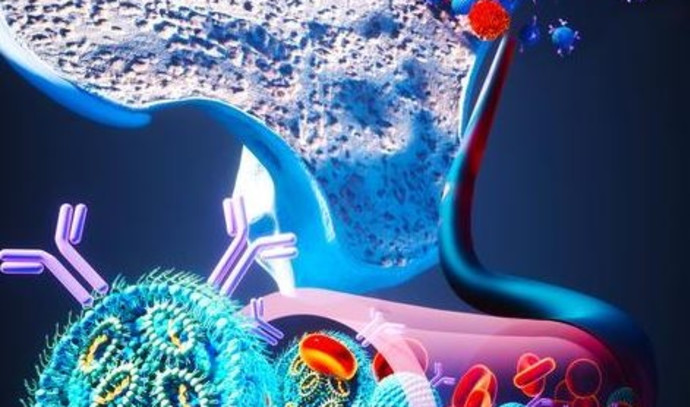Researchers at Tel Aviv University (TAU) destroyed 90% of the multiple myeloma blood cancer cells under lab conditions and 60% in human tissues taken from patients at the Rabin Medical Center-Beilinson Campus in Petah Tikva – using an RNA-based drug delivered to the cells by targeted lipid nanoparticles.
The researchers developed lipid-based nanoparticles – like those used in the COVID-19 vaccine – containing RNA molecules that silence the gene CKAP5, encoding cytoskeleton-associated protein 5. When this protein is inhibited, cancer cells are unable to divide, which essentially kills them. To avoid damaging non-cancerous cells, the nanoparticles were coated with antibodies that guided them specifically to the cancer cells inside the bone marrow.
The breakthrough was achieved by a group of researchers led by Prof. Dan Peer, a pioneer in the development of RNA therapeutics and head of the nanomedicine laboratory at the Shmunis School of Biomedicine and Cancer Research who is also TAU’s vice president for research and development. He was assisted by doctoral student Dana Tarab-Ravski. The results were published in the leading journal Advanced Science under the title “Dual-Targeted Lipid Nanotherapeutic Boost for Chemo-Immunotherapy of Cancer.”
What is this new groundbreaking cancer treatment?
Tarab-Ravski explained that “multiple myeloma is a blood cancer usually found in the older population. While most blood cancers appear in the blood stream or lymph nodes and spread from there to the rest of the body, multiple myeloma cells appear and form tumors inside the bone marrow – so they are very hard to reach.”
Their findings are very encouraging – under lab conditions in which cells are grown in flasks, the nanoparticles developed by the researchers eradicated about 90% of the cancer cells. At the second stage, the new treatment was tested on cancer samples taken from multiple myeloma patients at Beilinson’s hemato-oncological ward. The success rate in these samples was 60%. Testing the ability of the nanoparticles to reach the bone marrow in an animal model, the researchers found that after a single injection, the RNA had penetrated 60% of the multiple myeloma cancer cells in the bone marrow. When they examined the therapeutic effectiveness of the nanoparticles in the animal model, two-thirds of the cancer cells were wiped out, and the animals showed significant improvement in all clinical indicators.
“People with multiple myeloma suffer from severe pain in their bones, as well as anemia, kidney failure, and a weakened immune system,” Tarab-Ravski continued. “There are many possible treatments for this disease, but after a certain period of improvement, most patients develop resistance to the therapy and the disease relapses even more aggressively, so there is a constant need for developing new treatments for it.”
RNA-based therapy has a great advantage in this case because it can be developed very quickly,” she said. “Simply by changing the RNA molecule, a different gene can be silenced each time and the treatment is tailored to the progression of the disease and the individual patient. The challenge in these treatments is to reach the right cells. Today RNA therapeutics are approved for treating genetic liver disease and for vaccines injected into the muscle, as we saw with the COVID-19 shots. The drug-delivery system we developed is the first that specifically targets cancer cells inside the bone marrow, and the first to show that silencing the expression of CKAP5 gene can be used to kill blood cancer cells.”
Peer concluded that “our technology opens a new world for selective delivery of RNA medications and vaccines for cancer tumors and diseases originating in the bone marrow.”



